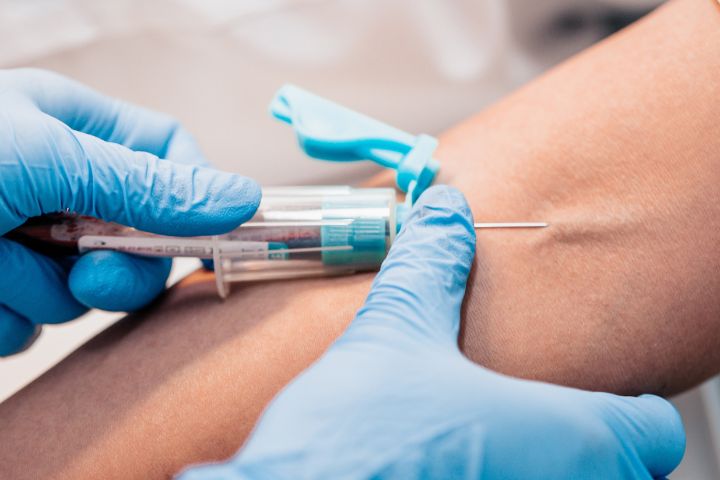Some Of Northeast Medical Institute - New Haven Campus Phlebotomy Course & Cna Class
Some Of Northeast Medical Institute - New Haven Campus Phlebotomy Course & Cna Class
Blog Article
Things about Northeast Medical Institute - New Haven Campus Phlebotomy Course & Cna Class
Table of ContentsNot known Details About Northeast Medical Institute - New Haven Campus Phlebotomy Course & Cna Class How Northeast Medical Institute - New Haven Campus Phlebotomy Course & Cna Class can Save You Time, Stress, and Money.Everything about Northeast Medical Institute - New Haven Campus Phlebotomy Course & Cna ClassNortheast Medical Institute - New Haven Campus Phlebotomy Course & Cna Class Things To Know Before You BuyThe Basic Principles Of Northeast Medical Institute - New Haven Campus Phlebotomy Course & Cna Class Northeast Medical Institute - New Haven Campus Phlebotomy Course & Cna Class for Beginners
The use of such devices need to be gone along with by various other infection prevention and control methods, and training in their usage. Not all safety and security devices apply to phlebotomy. Before selecting a safety-engineered tool, users need to thoroughly explore readily available gadgets to establish their appropriate use, compatibility with existing phlebotomy techniques, and efficacy in safeguarding staff and individuals (12, 33).For settings with reduced resources, price is a motoring element in purchase of safety-engineered tools. Where safety-engineered gadgets are not readily available, knowledgeable usage of a needle and syringe is acceptable.
Among the important pens of high quality of treatment in phlebotomy is the involvement and cooperation of the client; this is mutually valuable to both the health worker and the individual. Clear information either written or spoken ought to be readily available per individual that undertakes phlebotomy. Annex F supplies example message for describing the blood-sampling procedure to a person. In the blood-sampling room for an outpatient department or clinic, offer a comfortable reclining sofa with an arm rest.
The Main Principles Of Northeast Medical Institute - New Haven Campus Phlebotomy Course & Cna Class
Guarantee that the indications for blood tasting are plainly specified, either in a written protocol or in recorded instructions (e.g. in a research laboratory type). In any way times, follow the techniques for infection avoidance and control provided in Table 2.2. Infection avoidance and control methods. Gather all the equipment required for the procedure and place it within secure and very easy reach on a tray or trolley, guaranteeing that all the items are clearly noticeable.
Where the client is adult and mindful, adhere to the actions laid out below. Introduce yourself to the individual, and ask the client to specify their full name. Inspect that the laboratory form matches the individual's identity (i.e. match the client's details with the lab type, to make certain accurate identification). Ask whether the license has allergic reactions, phobias or has actually ever before collapsed throughout previous injections or blood attracts.
Make the patient comfortable in a supine position (if feasible). The client has a right to refuse an examination at any time prior to the blood sampling, so it is vital to make sure that the individual has recognized the treatment - Phlebotomy Training.
Indicators on Northeast Medical Institute - New Haven Campus Phlebotomy Course & Cna Class You Should Know
Prolong the patient's arm and evaluate the antecubital fossa or lower arm. Find a capillary of a good dimension that is noticeable, straight and clear. The representation in Area 2.3, shows common settings of the vessels, but lots of variations are possible. The average cubital vein lies between muscle mass and is typically one of the most very easy to pierce.
DO NOT place the needle where veins are diverting, because this increases the opportunity of a haematoma. Locating the capillary will certainly assist in figuring out the correct dimension of needle.
Haemolysis, contamination and presence of intravenous fluid and medicine can all alter the results (39. Nursing staff and doctors may access main venous lines for samplings adhering to methods. Specimens from central lines lug a threat of contamination or erroneous lab test results. It is acceptable, but not ideal, to injure specimens when first presenting an in-dwelling venous tool, before attaching the cannula to the intravenous liquids.
The 7-Minute Rule for Northeast Medical Institute - New Haven Campus Phlebotomy Course & Cna Class
Failing to allow enough call time enhances useful link the risk of contamination. DO NOT touch the cleansed website; in certain, DO NOT position a finger over the blood vessel to direct the shaft of the subjected needle.
Ask the client to develop a hand so the veins are extra prominent. Get in the capillary swiftly at a 30 degree angle or much less, and proceed to introduce the needle along the capillary at the simplest angle of access - CNA Courses. Once enough blood has actually been accumulated, launch the tourniquet BEFORE withdrawing the needle
The Definitive Guide for Northeast Medical Institute - New Haven Campus Phlebotomy Course & Cna Class
Withdraw the needle delicately and use gentle stress to the site with a clean gauze or dry cotton-wool round. Ask the client to hold the gauze or cotton woollen in position, with the arm prolonged and elevated. Ask the individual NOT to bend the arm, due to the fact that doing so triggers a haematoma.

Rumored Buzz on Northeast Medical Institute - New Haven Campus Phlebotomy Course & Cna Class
Where feasible, maintain the tubes in a rack and relocate the shelf towards you - https://pxhere.com/en/photographer/4295682. If the example tube does not have a rubber stopper, infuse exceptionally gradually into the tube as lessening the stress and speed made use of to move the sampling lowers the danger of haemolysis.
:max_bytes(150000):strip_icc()/Primary_Image-b2e24c37575f48279cff673865d3853c.jpg)
Report this page